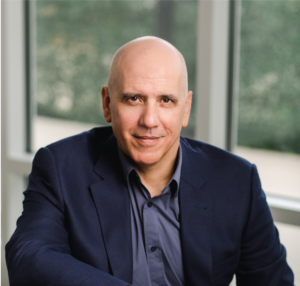A few weeks ago, several members of the Building Engines team attended the 2018 BOMA International Conference and Expo in San Antonio, TX to collaborate with industry leaders on the current challenges, latest trends, and the future of the commercial real estate industry.
Aside from the great receptions and informative content, the Building Engines team particularly enjoyed hosting Family Feud (CRE Style). It was a real test of wits and CRE property management best practices for participants.
Below are some key takeaways from the conference:
- Conversational tenant communication. The way tenants prefer to communicate with building management is evolving. Property managers are constantly adapting to meet the wants and needs of their tenants in order to improve tenant sentiment.
- Great communication leads to revenue. Building off that point, tenants who truly understand, appreciate, and can clearly communicate the amenities and features of their building are more likely to renew their lease. This means that property managers are challenged with clearly communicating the value of their building to their current and prospective tenants.
- Certain amenities are no longer optional. The dynamic of workplace design continues to change the needs and desires of tenants. Amenities that building owners once thought would drive interest and revenue at their buildings are now quickly becoming a competitive necessity, rather than an advantage. This is also shifting the way Property Managers cater to their portfolios. It’s less about the rentable square footage and more about amenity programs and building a sense of community for tenants. Another stunning statistic from one of the BOMA sessions is that 40% of leased space will be co-working/flexible space by 2030.
- Demands on property managers are greater than ever. As tenants become more concerned with attracting and retaining top talent; building location, amenities, comfort, and communication are crucial considerations for tenant companies and their talent retention.
- Aging buildings need to be innovative to attract and retain tenants. Older buildings, which we are no strangers to in Boston, require additional creativity when it comes to renovations/retrofits and tenant luxuries to keep up with new construction. Transwestern noted that adding above-average design and amenities to 2nd generation class A buildings enables owners to raise rents by 7% and increase their occupancy rates.
- Artificial intelligence is being introduced for CRE in practical ways. New technologies – drones, robots, 3D phones, and wireless power are being introduced to commercial real estate. Brookfield Property Partners recently implemented a roaming security robot to a complex in Houston, which provides Brookfield property managers with real-time data they can use to identify security concerns.
- CRE organizations are transitioning to be data-driven. Property managers are capturing data and building analytics through CRE technology. The next step is figuring out what to do with that data. Organizations should start by defining their goals and selecting KPIs to align.
Based on our takeaways from the BOMA Conference and Expo, here are a few questions to ask yourself about your own building operations:
- Do you know how your tenants are using their space and if they are getting the necessary perceived value from that square footage?
- What amenities set your building apart from others? What amenities do other buildings in a one-mile radius have that your building does not currently offer?
- Do your tenants know about the benefits of your building? Are you communicating this effectively? If not, how can you communicate better?
- Where can you add additional technologies in your building to enhance efficiency, safety, operations, and the tenant experience?
- With the always popular topic of generation gaps at the workplace, how does this affect your tenants? During the Tuesday General Session at BOMA, Henry Chamberlain, President, and COO of BOMA International asked the audience – what is 1 word to describe success by each generation? The Baby Boomers described success in relation to salary; Gen X was measured by balance; the Millennials – happiness. What are you doing to create a sense of community in your building for all generations?
The most notable challenges that Property Managers are concerned with today, as communicated at the BOMA Conference include tenant retention/amenities, energy and service costs, risk mitigation, and lease rates. To manage these challenges Property Managers need to rely on property management software like Building Engines.
Thank you again, BOMA, for a great conference as always – see you next year in Salt Lake City!






